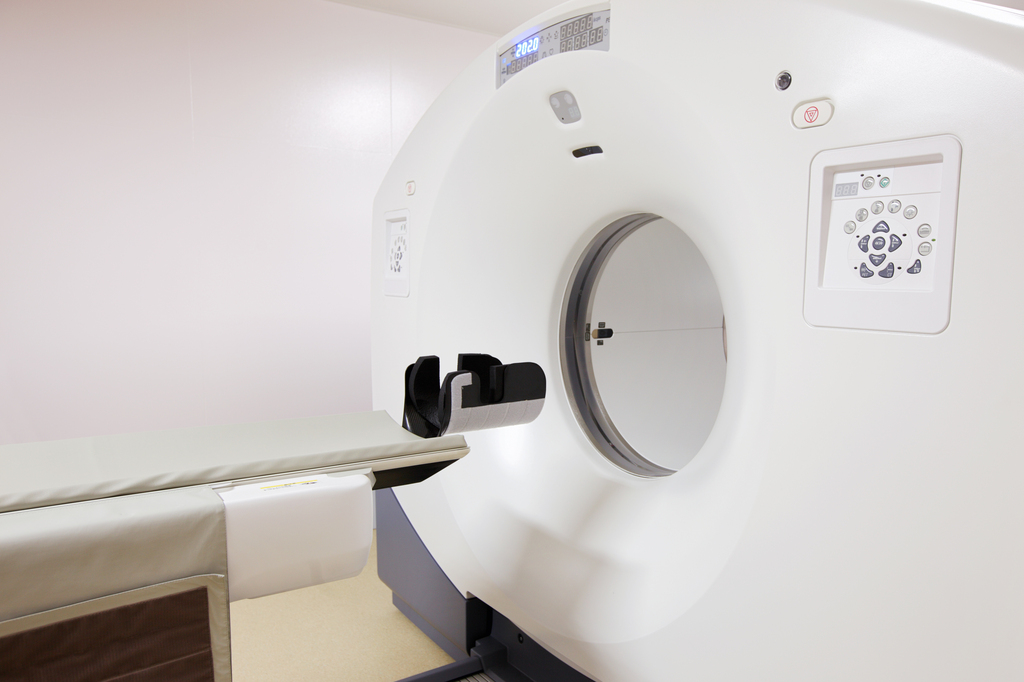Non-invasive MRI May Help Diagnose AADC Deficiency
Written by |

Systematic analysis of non-invasive MRI brain scans of people with aromatic l-amino acid decarboxylase (AADC) deficiency identified disease-related changes in brain structure, which may help diagnose the disorder and related conditions, a study suggests.
The study, “Brain MR patterns in inherited disorders of monoamine neurotransmitters: An analysis of 70 patients,” was published in the Journal of Inherited Metabolic Disorders.
Mutations in the DDC gene lead to reduced activity of the AADC enzyme, which is essential for the production of dopamine and serotonin, two signaling molecules — known as monoamine neurotransmitters — that mediate communication between nerve cells in the brain.
AADC deficiency is part of a group of conditions called inherited monoamine neurotransmitter disorders (iMNDs). Each is caused by mutations that lead to defects in either the production, recycling, or transport of monoamine neurotransmitters, as well as the production and recycling of tetrahydrobiopterin (BH4), a molecule essential for their synthesis.
iMNDs are characterized by a wide range of symptoms that can vary from person to person, including low muscle tone and movement problems in infancy, or early severe encephalopathy — any disease of the brain that alters brain structure or function.
Thus, iMNDs can mimic many other more common neurological conditions, making diagnosis challenging.
Like AADC deficiency, iMNDs are typically diagnosed by genetic tests or by measuring monoamines in blood, urine, or cerebrospinal fluid (CSF, the fluid surrounding the brain and spinal cord).
Non-invasive brain MRIs are not used currently as a diagnostic tool in iMNDs, as imaging results collected so far have been non-specific.
Here, researchers based at University Children’s Hospital, in Germany, collaborating with investigators at sites worldwide, examined MRI scans of 70 people with different iMNDs, including AADC deficiency, to characterize brain structure changes and re-evaluate the diagnostic role of MRI.
Participants selected for the study were enrolled in the patient registry of the International Working Group on Neurotransmitter Related Disorders, which included 12 AADC deficiency patients.
Other patients included 39 with BH4 deficiencies, 16 with tyrosine hydroxylase deficiency (THD), an enzyme required for dopamine production, and three with monoamine oxidase A deficiency, needed for recycling.
In those with AADC deficiency, the onset of symptoms occurred in the neonatal period or early infancy, presenting as a range of symptoms including low muscle tone, seizures, and developmental delay. Patients also exhibited motor symptoms such as involuntary movements, and non-motor symptoms, such as sleep disorders and difficulty maintaining body temperature.
Overall, MRI scans found brain structural changes in 37 of the 70 participants. Atrophy (tissue shrinkage) was the most common finding (24 patients), followed by 12 with variable changes in gray matter structures and alterations to white matter. Of note, white matter is white because of a fatty substance, called myelin, that surrounds nerve fibers and supports the transmission of nerve impulses.
In two patients with AADC deficiency, a delayed coating of myelin (myelination) was found from scans completed between the ages of five and six months. After the age of 2 years, however, all patients’ images showed myelination was complete without any observable defects.
White matter signal changes not related to delayed myelination were seen in two participants with AADC deficiency. One additional patient had white matter alteration as well as thinning of the cortex (the outer layer of the brain).
“This is a characteristic though non-specific imaging pattern seen in neuronal disorders of post-infantile onset,” the researchers wrote.
One AADC deficiency patient with severe neurologic disease, diagnosed at 18 months, was hospitalized at nine months of age following an upper respiratory tract infection, which required mechanical ventilation and intensive care. Subsequent MRI scans demonstrated changes consistent with brain tissue damage due to low oxygen.
Non-specific, variable atrophy was observed in 24 patients of the 70 participants imaged between 5 months and 25 years. A 17-month-old patient with AADC deficiency lacked an MRI signal for the pituitary gland, which secretes hormones. However, there were no documented findings of altered hormonal levels.
In those with AADC deficiency (and THD), MRI changes were more variable and less common than the other conditions. These also were “the two only disorders in which delayed myelination was observed,” the team wrote.
Overall, six of the 12 AADC deficiency participants had normal imaging, two had myelination delay, and the other four had either atrophy, white matter changes consistent with a disorder of post-infantile onset, or injury due to low oxygen.
“iMNDs are associated with MRI patterns consistent with chronic effects of a neuronal disorder and signs of repetitive injury,” the investigators concluded. “These will be helpful in the (neuroradiological) differential diagnosis of children with unknown disorders and monitoring of iMNDs.”




